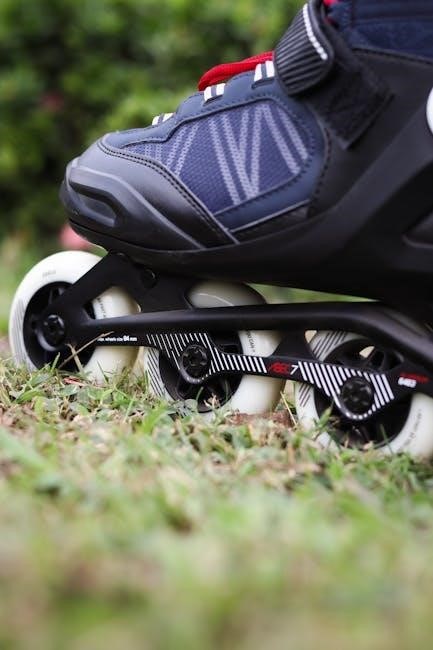Welcome to the Honda Fit Owner’s Manual, your comprehensive guide to understanding and maintaining your vehicle. This manual covers essential information about safety, features, and maintenance to ensure optimal performance and longevity of your Honda Fit.
1.1 Understanding the Purpose of the Manual
The Honda Fit Owner’s Manual is designed to provide owners with a comprehensive understanding of their vehicle’s operation, safety features, and maintenance requirements. It serves as a detailed guide to help drivers optimize their driving experience and ensure the longevity of their car. The manual covers essential information about safety precautions, instrument panel functions, and maintenance schedules. It also includes troubleshooting tips and guidelines for customizing your Honda Fit. By following the manual’s instructions, owners can ensure their vehicle performs at its best while adhering to safety standards. This manual is a valuable resource for both new and experienced Honda Fit owners, offering clear and concise information to enhance ownership satisfaction. Regularly reviewing the manual helps owners stay informed about their vehicle’s needs and capabilities, ensuring a safe and enjoyable driving experience.
1.2 Overview of the Honda Fit Models
The Honda Fit is a versatile subcompact car produced since 2001, known for its spacious interior and fuel efficiency. Available in various model years, the Fit has evolved to meet changing driver needs. From 2007 to 2020, models offered advancements in engine performance, transmission options, and technology. Earlier models emphasized practicality, while later versions incorporated features like Honda Sensing® safety technologies. Each model year introduced updates, such as enhanced infotainment systems, improved fuel economy, and refined interior designs. Whether you own a 2007 Fit or a 2020 model, this manual provides tailored guidance to help you understand and maintain your specific Honda Fit, ensuring optimal performance and longevity.

Safety Information and Precautions
This section provides critical safety guidelines to ensure proper vehicle operation. Adhere to precautions, understand risks, and follow safe driving practices to minimize hazards and protect occupants.
2.1 Important Safety Precautions
This section outlines essential safety guidelines to ensure safe operation of your Honda Fit. Always read and understand the manual before driving. Familiarize yourself with warning lights, alarms, and safety features. Never ignore safety precautions, as they are designed to protect you and your passengers. Avoid distractions while driving, such as using electronic devices. Ensure all occupants wear seatbelts correctly, and properly secure children in approved child seats. Be aware of vehicle load limits and avoid overloading. Regularly check tire pressure and brakes for optimal safety. Refer to the manual for specific instructions on emergency procedures and system malfunctions. Following these precautions minimizes risks and enhances driving safety.
2.2 Safe Driving Practices
Safe driving practices are crucial for ensuring the well-being of you and your passengers. Always adjust your driving to match road conditions, reducing speed in poor weather or heavy traffic. Use safety features like seatbelts, airbags, and anti-lock brakes correctly. Maintain a safe distance from other vehicles to allow ample reaction time. Avoid distractions such as using electronic devices while driving. Be mindful of your vehicle’s load capacity and ensure proper weight distribution. Regularly check tire pressure and brakes to maintain optimal performance. Familiarize yourself with traffic laws and follow them diligently. By adhering to these practices, you can significantly reduce the risk of accidents and enhance your overall driving experience.

Honda Fit Model Year Variations
The Honda Fit is available in multiple model years, each offering unique features and improvements. From 2007 to 2020, updates include enhanced performance, design, and technology.
3.1 2007-2010 Honda Fit Models
The 2007-2010 Honda Fit models introduced a versatile and fuel-efficient subcompact car. These models featured a 1.5L i-VTEC engine, offering 109 horsepower and 105 lb-ft of torque. The Fit was known for its “Magic Seat” system, providing exceptional cargo flexibility. These years saw the introduction of both manual and automatic transmissions, with the latter improving city driving convenience. Safety features included dual front airbags and anti-lock brakes. Interior amenities were minimalist yet functional, with basic controls and an optional CD player. These early models established the Fit as a practical choice for urban commuters, balancing affordability with reliability.
3.2 2011-2015 Honda Fit Models
The 2011-2015 Honda Fit models marked a significant evolution, offering enhanced performance and features. These Fits were equipped with a 1.5L engine, delivering 117 horsepower and 106 lb-ft of torque, paired with either a 5-speed manual or automatic transmission. The interior featured improved materials and optional features like Bluetooth connectivity and a USB port, enhancing comfort and convenience. The “Magic Seat” system remained a standout feature, providing versatile cargo configurations. Fuel efficiency improved, with EPA ratings of up to 33 mpg in the city and 41 mpg on the highway. These models also introduced advanced safety features, including Vehicle Stability Assist and a multi-angle rearview camera, making them a reliable and tech-savvy choice for drivers.
3.3 2016-2020 Honda Fit Models
The 2016-2020 Honda Fit models introduced a refreshed design and advanced technologies. These Fits featured a 1.5L Earth Dreams engine, offering improved fuel efficiency and performance, with 130 horsepower and 114 lb-ft of torque. Transmission options included a 6-speed manual or CVT, enhancing drivability. The interior was upgraded with available features like a touchscreen infotainment system, Apple CarPlay, and Android Auto. Safety saw significant upgrades with the introduction of Honda Sensing, a suite of driver-assist technologies including Collision Mitigation Braking and Lane Keeping Assist. Exterior styling was modernized with sleek lines and LED lighting. These models continued the Fit’s legacy of versatility, with the “Magic Seat” system and excellent cargo space, making them a top choice for practicality and innovation in the subcompact class.

Features and Controls
The Honda Fit features a touchscreen infotainment system, Apple CarPlay, Android Auto, and Honda Sensing technologies. Controls are ergonomically designed for ease of use and convenience.
4.1 Instrument Panel Overview
The Honda Fit’s instrument panel is designed for clarity and functionality. It features a digital odometer, fuel gauge, and temperature display. The panel also includes warning lights for system checks, oil levels, and safety features. The central touchscreen controls navigation, climate settings, and entertainment systems. Buttons and knobs are strategically placed for easy access while driving. The panel’s layout ensures drivers can monitor essential information without distraction, enhancing both safety and driving comfort. This design emphasizes user-friendly operation, making it easy to navigate through various functions seamlessly.

4.2 Main Controls and Functions
The Honda Fit features a range of intuitive controls designed for ease of use. The gearshift, located on the center console, allows seamless transitions between gears. The steering wheel includes mounted controls for audio, cruise control, and phone functions. Climate controls are centrally located, with buttons and knobs for temperature, fan speed, and air direction. The infotainment system offers touchscreen navigation, Bluetooth connectivity, and access to multimedia features. Additional controls include power window buttons, mirror adjustments, and hazard lights. These functions are strategically positioned to ensure accessibility while driving, minimizing distractions and enhancing overall comfort and safety on the road.

Maintenance and Care
Regular maintenance ensures your Honda Fit performs optimally; Schedule routine checks, fluid replacements, and inspections as outlined in the manual to preserve performance, safety, and longevity.
5.1 Scheduled Maintenance
Scheduled maintenance is crucial for the longevity and performance of your Honda Fit. Regular servicing includes oil changes, tire rotations, and inspections of key components like brakes and belts. The manual outlines specific intervals, such as every 5,000 to 7,500 miles for oil changes, depending on driving conditions. Proper adherence ensures fuel efficiency, reduces wear, and prevents unexpected repairs. Always refer to the maintenance schedule in your owner’s manual to stay on track and keep your vehicle running smoothly.
5.2 Fluid Checking and Replacement
Regular fluid checks are essential for maintaining your Honda Fit’s health. Engine oil, coolant, transmission, and brake fluids should be inspected monthly. Engine oil levels are checked using the dipstick, while coolant levels are monitored via the reservoir. Transmission fluid is typically checked with the car running and in park. Brake fluid levels are also accessed through the reservoir. Replacement intervals vary, with engine oil typically every 5,000 to 7,500 miles, coolant every 30,000 to 50,000 miles, and transmission fluid around 30,000 miles. Always use Honda-approved fluids to ensure compatibility and optimal performance. Refer to your owner’s manual for specific guidelines to avoid damage and maintain your vehicle’s warranty.
5;3 Minor Repairs and Services
Minor repairs and services are crucial for maintaining your Honda Fit’s performance and longevity. Regular inspections of belts, hoses, and air filters are recommended to prevent unexpected issues. Replacing the engine air filter every 15,000 to 30,000 miles improves fuel efficiency and engine health. Wiper blades should be replaced when showing signs of wear to ensure clear visibility. Fuses and light bulbs can be replaced at home with genuine Honda parts. For minor services, consult your owner’s manual for guidelines or visit an authorized Honda service center. Addressing small problems promptly prevents major repairs and keeps your vehicle running smoothly. Always use Honda-approved parts to maintain reliability and warranty coverage.

Troubleshooting Common Issues
Welcome to the troubleshooting section of your Honda Fit Owner’s Manual. This guide helps identify and resolve common issues efficiently, ensuring optimal performance and preventing severe problems. Use genuine parts for reliable repairs.
6.1 Diagnostic Techniques
Diagnosing issues in your Honda Fit begins with understanding the tools and resources available. Consult the Owner’s Manual for guidance on identifying common problems. Use the dashboard warning lights as indicators of potential issues, such as the Check Engine light for engine-related concerns. Review the maintenance history to pinpoint neglected services. For advanced diagnostics, utilize a scan tool to retrieve error codes from the vehicle’s onboard computer. Refer to official Honda Fit Diagnostic Techniques outlined in the manual or online resources. Always use genuine Honda parts and tools for accurate diagnostics. If unsure, consult a certified Honda technician to avoid further damage. Regular checks can prevent major repairs and ensure your vehicle runs smoothly.
6.2 Resolving Common Problems
Resolving common issues with your Honda Fit involves addressing both minor and major concerns promptly. Start by identifying the problem through diagnostic techniques and error codes. For issues like uneven tire wear, check tire pressure and alignment. Battery problems often require charging or replacement. If the air conditioning isn’t cooling, inspect for refrigerant leaks. Refer to the Owner’s Manual for troubleshooting guides specific to your model year. For complex issues, such as transmission or engine concerns, consult a certified Honda technician. Regular maintenance, like oil changes and fluid checks, can prevent many problems. Always use genuine Honda parts for repairs to ensure reliability. Keep your manual handy for step-by-step solutions and to avoid costly repairs.

Technical Specifications
The Honda Fit features a 1.5-liter engine, producing 130 horsepower and 114 lb-ft of torque, with options for manual or CVT transmission, ensuring efficient performance across 2007-2020 models.
7.1 Engine and Performance Details
The Honda Fit is equipped with a 1.5-liter, inline-4 cylinder engine, delivering 130 horsepower and 114 lb-ft of torque. Available in both manual and CVT transmissions, it ensures smooth acceleration and fuel efficiency. The engine features Honda’s i-VTEC technology, optimizing power and fuel consumption. Across model years, the Fit maintains consistent performance, with slight variations in horsepower and torque for different trims. Proper maintenance, as outlined in the manual, is crucial for sustaining engine performance and longevity. Regular oil changes, spark plug replacements, and inspections ensure the engine runs efficiently, providing reliable service for years. Consult the manual for specific details on maintaining your Fit’s engine performance.
7.2 Transmission and Fuel Efficiency
The Honda Fit offers a choice of a six-speed manual transmission or a continuously variable transmission (CVT), both designed to enhance driving efficiency. The manual transmission provides precise control and smooth shifting, while the CVT delivers seamless acceleration and improved fuel economy. Depending on the model year and trim, the Fit achieves an estimated EPA rating of up to 33 mpg in the city and 41 mpg on the highway. Regular maintenance, such as fluid checks and filter replacements, ensures optimal transmission performance and fuel efficiency. The manual also emphasizes proper driving habits to maximize mileage, making the Honda Fit a practical choice for economical and efficient commuting.

Accessories and Customization
The Honda Fit supports a variety of genuine accessories to enhance functionality and personalization. Explore options like roof racks, cargo organizers, and infotainment upgrades to tailor your vehicle to your preferences.
8.1 Genuine Honda Accessories
Genuine Honda accessories are specifically designed to enhance the functionality, comfort, and style of your Honda Fit. These accessories are rigorously tested to ensure compatibility and quality, offering a perfect fit and finish. Popular options include roof racks for added storage, cargo organizers to maximize trunk space, and premium audio systems for an elevated driving experience; Additionally, interior accents like illuminated door sills and seat covers can personalize your vehicle. All genuine Honda accessories are backed by a warranty and are available through authorized Honda dealers. By choosing genuine parts, you maintain your vehicle’s performance and aesthetic appeal while ensuring long-term reliability and satisfaction.
8.2 Customizing Your Honda Fit
Customizing your Honda Fit allows you to tailor the vehicle to your personal preferences and lifestyle. From performance upgrades to interior styling, there are countless ways to make your Fit stand out. Popular modifications include aftermarket alloy wheels, sport-tuned suspension systems, and aerodynamic body kits for a sleek appearance. Inside, you can enhance comfort with custom seat upholstery, premium flooring mats, or ambient lighting. Technology enthusiasts might opt for infotainment system upgrades or smartphone integration kits. Always ensure that modifications comply with safety standards and local regulations. Customization not only enhances your driving experience but also adds a personal touch, making your Honda Fit truly unique to you.

Warranty and Service Information
Understanding your Honda Fit’s warranty ensures coverage for repairs and replacements. Warranty details vary by model year; check your manual for specifics. Authorized service centers provide genuine parts and expert maintenance, ensuring your vehicle stays in optimal condition. Regular maintenance is crucial to uphold warranty validity and extend your car’s lifespan.
9.1 Understanding Your Warranty
Your Honda Fit warranty provides coverage for repairs and replacements of parts and labor under specific conditions. The warranty period varies by model year, typically starting from the date of purchase. It is essential to review the warranty terms in your owner’s manual to understand what is covered and for how long. Regular maintenance, as outlined in the manual, is often required to maintain warranty validity. Additionally, any modifications or repairs not authorized by Honda may void the warranty. Understanding your warranty ensures you can utilize its benefits effectively and maintain your vehicle’s performance and value over time.
9.2 Finding Authorized Service Centers
To ensure your Honda Fit receives proper care, it is crucial to use authorized service centers. These centers employ certified technicians who specialize in Honda vehicles, guaranteeing high-quality repairs and maintenance. You can locate authorized service centers through Honda’s official website or by contacting Honda customer service directly. Additionally, the Honda Owners App provides a convenient way to find nearby authorized dealerships. Always verify the center’s authorization status to ensure your vehicle is serviced correctly and to maintain warranty validity. Regular maintenance at authorized centers ensures your Honda Fit performs optimally and retains its value over time.
Your Honda Fit Owner’s Manual is a vital resource for maximizing your ownership experience. By following its guidance, you ensure optimal performance, safety, and longevity for your vehicle.
10.1 Maximizing Your Honda Fit Ownership Experience
To maximize your Honda Fit ownership experience, familiarize yourself with the owner’s manual, which provides detailed insights into safety features, maintenance schedules, and operational tips. Regularly check fluids, tires, and battery to ensure optimal performance. Utilize the manual’s troubleshooting guide to address common issues promptly, preventing potential damage. Explore the vehicle’s advanced features, such as Honda Sensing technologies, to enhance driving comfort and safety. Schedule routine maintenance with authorized service centers to maintain warranty coverage and extend your car’s lifespan. By following the manual’s recommendations, you can enjoy a smooth, efficient, and enjoyable driving experience while preserving your Honda Fit’s value and reliability over the years.
